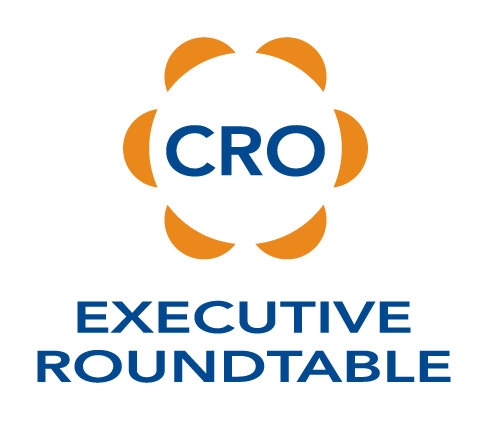An introduction from Thomas Herman, Managing Director - Chicago, CRO Executive RoundTable
10 Traits of Creative Leaders
Creativity is a rare talent in leaders today.
The modern-day pressure to increase productivity, I believe, has put a burden on leaders that has neutralized their natural creative abilities. Creativity takes time, thought, risk, perseverance and resources. You can see where this cuts against the role of many leaders today where profitability, speed, and efficiency are valued over pace-oriented traits.
This article from Monster.com quotes 10 qualities of creative leaders. The source is David Ogilvy, one of the original Mad Men:
1. High standards of personal ethics.
2. Big people, without pettiness.
3. Guts under pressure, resilience in defeat.
4. Brilliant brains — not safe plodders.
5. A capacity for hard work and midnight oil.
6. Charisma — charm and persuasiveness.
7. A streak of unorthodoxy — creative innovators.
8. The courage to make tough decisions.
9. Inspiring enthusiasts — with trust and gusto.
10. A sense of humor.
Notice how his list contains elements of courage in multiple qualities? I couldn’t agree more with his list and especially this need for courage. Creativity usually requires some form of going against the grain. Many leaders simply avoid upsetting the status quo or longstanding sacred cows within an organization. I find that reluctance all-too-common...and disappointing.
I’ll leave you with some sage advice directly from the author of the article:
“Creative leadership makes your job more meaningful and gives you visibility. Do something small at first – deliver a project early, come up with alternative courses of action, and whenever possible deliver unexpected added value. A bit of qualitative research or sentiment analysis (collecting comments made on forums or social media) is a good example of providing new perspectives that lead to new solutions.”
Most CRO's Don't Know This Important Ratio
Seems simple, but here it is:
Let me offer up some definitions of each box:
Connects: Cold contact from a list or similar resource
Suspects: Contacted and have general need or use for your product/service
Prospects: Qualified for need, budget & buying time
Quotes: Formal proposal to do business
Close: Completed order in response to quote
Again, this is a simple concept, but it is of great consequence when hiring salespeople. We call it the Connects-to-Close ratio and it defines many of the parameters you need to use in your hiring efforts.
There are many layers to the ratio that impact the sales skills, selling style and aptitudes to measure in any candidate. Instead of getting lost in those weeds, let me boil it down to the essence of why you need to know this ratio:
You cannot ask a new salesperson to do something 10, 50, 100 times without first being able to explain it one time.
10 Characteristics of a Leader
Photo by David Dibert from Pexels
These are the 10 according to Selling Power:
1.) Be courageous.
2.) Think big.
3.) Master change.
4.) Be ethical.
5.) Have a sense of humor.
6.) Be persistent and realistic.
7.) Be positive and hopeful.
8.) Accept power and use it wisely.
9.) Make decisions.
10.) Be committed.
A solid list for sure. I have to call out the description for “Think big.”:
“Great leaders are curious, eager to create new things, and able to bring out the best in others. They have an ability to see the big picture and work toward making that picture a reality.”
If you want to call out 3 qualities for a strong leader, you would have a good start with curious, creative and inspiring.
Candidate Question: What Leads to Failure?
The title of this post is one of my favorite questions to hear from a candidate in an interview, especially in sales.
Monster’s website has a good article on 4 questions for candidates to ask. I still like the failure question as it is as good a qualifying question any candidate can ask. The author adds this from a candidate’s perspective:
“This question allows you to get a good feel about the values of the company.
…
Making sure that the company’s values are aligned with yours is one of the most important elements to check out in the interview process.”
Exactly right. Candidates should be asking about failures in the role especially if the hire is a replacement.
Here is why – in psychological terms, we know that people are far more accurate in describing themselves in the negative (i.e. what they are not as opposed to what they are). This principle carries over in this particular interview question. Asking what led to failure will provide a far more revealing answer than asking what leads to success (though still important to know at some point).
When you are hiring salespeople, the answer to this question should roll off your tongue. The key is not to focus singularly on the former salesperson who failed, but to take a macro view of the situation. The rationale for this approach is to provide a less personal and more strategic an answer.
CRO Rule #10 - Use Interviews as Simulations
CRO Success Rule #10:
Candidate interviews need to be a simulation of the sale you expect them to conduct.
We have arrived at our final CRO Success rule and it is an important one. Bad sales hiring happens for many reasons, but there are “free moves” you can use to enhance your hiring success. One of them is the interview. Too often we see hiring managers who simply want to have a discussion about a candidate’s resume along with telling them about the position, the company, the benefit plan, etc. Bad move.
The better approach is to mirror your typical sale in the initial interview. Sales interviews do not need to be comfortable, easy-going discussions. Instead, match the parameters of your typical sale. Have multiple people in the interview if they will have to sell to a group. Be somewhat short and curt with them if your prospects are typically in a hurry and not eager to talk to a salesperson. Interrupt the candidate, drill down on their answers, ask for deeper clarification…all of these moves are free. You would be wise to incorporate them into your hiring process so you can see the candidates in action.
What is Your Leadership Style?
Photo by Miguel Á. Padriñán from Pexels
We help CRO's and other leaders understand their leadership style. This knowledge helps optimize communication with their team, develop their emotional intelligence and leverage their natural strengths.
Harvard Business Review provides a short look at some general leadership styles. You can take a quick quiz on this page to determine your style. The selections are these:
COLLABORATOR: empathetic, team-building, talent-spotting, coaching oriented
ENERGIZER: charismatic, inspiring, connects emotionally, provides meaning
PILOT: strategic, visionary, adroit at managing complexity, open to input, team oriented
PROVIDER: action oriented, confident in own path or methodology, loyal to colleagues, driven to provide for others
HARMONIZER: reliable, quality-driven, execution-focused, creates positive and stable environments, inspires loyalty
FORECASTER: learning oriented, deeply knowledgeable, visionary, cautious in decision making
PRODUCER: task focused, results oriented, linear thinker, loyal to tradition
COMPOSER: independent, creative, problem solving, decisive, self-reliant
An important pull quote from the test:
But far more often we find that success depends on the hows — specifically, how leaders’ styles mesh with their teams and organizational cultures.
Very true.
CRO Rule #9 - Hire Stronger
CRO Success Rule #9
Every time there is an open sales position, the next new hire needs to be at least as strong as the best sales person you currently have or have ever employed.
Every CRO, and I mean every CRO, has a sales hiring horror story. I contend that hiring salespeople is the toughest hire any company faces. The simple reason is this – even “bad” salespeople can fake it long enough to get through the traditional sales hiring process.
The solution? Don’t use a traditional sales hiring process.
We have developed a complete, unique sales hiring process that screens out the cute puppy to borrow a turn of phrase from my book. Bad sales hires are extremely expensive to any company with not only hard costs but with the greater loss of opportunity costs.
To build a world-class sales team, you have to hire stronger salespeople.
Best Time to Cold Call
Does anyone still cold call?
They do…though it is not a high ROI activity. That being said, there are some tips that can provide a slight advantage to this activity.
The Harvard Business Review (sorry, no link) posted some usable data from the insidesales.com team. The important summary:
Best Days to Make Contact:
1. Thursday
2. Wednesday
Surprisingly, Friday is the 3rd best day. However, Thursday and Wednesday are by far the best days.
Best Times to Make Contact:
1. 3:30pm to 5:30pm
2. 7:30am to 8:30am
How about that? I grew up in the “old school” days of calling during 9:00am to 3:00pm. That explains my ineffectiveness…if only I had known this information then! (That is a fine example of the longstanding sales technique called “excuse making”).
The disclaimer here is that these are suggestions based on averaging 3 years of call data. Of course there are variations based on whom you are attempting to reach, time of year, etc. Yet, I like to say that sometimes sales simply comes down to slight advantage.
CRO Rule #8 - The Most Underutilized Tool
CRO Success Rule #8
Incentives are the most underutilized tool available to Chief Revenue Officers in terms of meeting their performance objectives.
Truly, there are certain things I encounter, when working with CROs, that are as consistent as an underutilized incentive plan (and strategy). Salespeople are motivated by money in most instances. That motivation will drive behaviors. If you incent the motivation, you will elicit the behaviors you want.
That is a bit simplistic, but you get my point. One thing all sales incentive programs should contain is that new business should pay out at a higher commission rate than existing (customer) business. There are variations and adjustments needed to fit your plan, but this basic structure should always be followed.
I discuss margin incentives, threshold incentives, team incentives and more in the book if you are interested in learning more.











